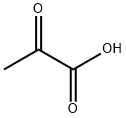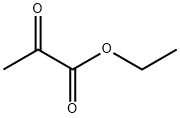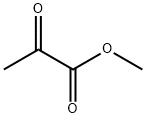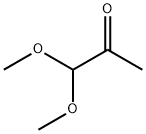Methylglyoxal
Synonym(s):Acetylformaldehyde;Methylglyoxal solution;Pyruvaldehyde;Pyruvic aldehyde
- CAS NO.:78-98-8
- Empirical Formula: C3H4O2
- Molecular Weight: 72.06
- MDL number: MFCD00006960
- EINECS: 201-164-8
- SAFETY DATA SHEET (SDS)
- Update Date: 2024-04-16 14:59:45

What is Methylglyoxal?
Description
Methylglyoxal (MG) is a highly reactive a-dicarbonyl compound that is primarily generated endogenously during glycolytic pathways (glucose and fructose metabolism) in cells and exogenously due to autoxidation of sugar, degradation of lipids, and fermentation during food and drink processing. Methylglyoxal polymerizes readily; it is hygroscopic and incompatible with strong oxidizing agents and bases. Methylglyoxal may be present as a free molecule in the diet or bound to biological materials, such as proteins, and as advanced glycation end products (AGEs), which are poorly absorbed. Methylglyoxal has been indicated in pathological events associated with hyperglycemia in both type 1 and type 2 diabetes and in other diabetic complications as either a direct toxin or as a precursor for AGEs. In animal studies, MG has been shown to induce tumorigenesis, but has also been reported as a tumoristatic agent. Methylglyoxal has been identified as the dominant antibacterial constituent of manuka honey.
The Uses of Methylglyoxal
Methylglyoxal solution has been used:
- to assess glyoxalase 1 (GLO1) enzymatic activity
- as an advanced glycation end (AGE) forming agent for the preparation of albumin in vitro
- to regulate anxiety like behavior in mice
- to induce peritoneal fibrosis in rats
- to study the chromatographic retention characteristics of organic chemicals and metal DNA adducts
- for intraplantar injection in mice to investigate peripheral and central components of methylglyoxal (MG)-transient receptor potential ankyrin 1 (TRPA1)-adenylyl cyclase 1 isoform (AC1) pathway
Properties of Methylglyoxal
| Melting point: | 25 °C |
| Boiling point: | 72 °C |
| Density | 1.19 g/mL at 20 °C |
| storage temp. | 2-8°C |
| form | Solution |
| color | Clear yellow to yellow-brown |
| Water Solubility | >=10 g/100 mL at 17 ºC |
| Sensitive | Air Sensitive |
Safety information for Methylglyoxal
| Signal word | Danger |
| Pictogram(s) |
 Corrosion Corrosives GHS05  Exclamation Mark Irritant GHS07  Health Hazard GHS08 |
| GHS Hazard Statements |
H290:Corrosive to Metals H317:Sensitisation, Skin H318:Serious eye damage/eye irritation H341:Germ cell mutagenicity |
| Precautionary Statement Codes |
P202:Do not handle until all safety precautions have been read and understood. P234:Keep only in original container. P280:Wear protective gloves/protective clothing/eye protection/face protection. P302+P352:IF ON SKIN: wash with plenty of soap and water. P305+P351+P338:IF IN EYES: Rinse cautiously with water for several minutes. Remove contact lenses, if present and easy to do. Continuerinsing. P308+P313:IF exposed or concerned: Get medical advice/attention. |
Computed Descriptors for Methylglyoxal
| InChIKey | AIJULSRZWUXGPQ-UHFFFAOYSA-N |
New Products
3-N-BOC-(S)-AMINO BUTYRONITRILE 4-Piperidinopiperidine 2-Methyl-4-nitrobenzoic acid 2-(4-bromophenyl)-2-methylpropanoic acid 4-Acetyl-2-methylbenzoicacid Acetyl-meldrum's acid Ethyl-4-Pyrazole carboxylate 2,6 Di acetylpyridine 2,6-Pyridinedimethanol 5,7-Dichloro-3H-Imidazo[4,5-B]Pyridine 5-Bromo-2-Methoxy-4-Methyl-3-Nitropyridine 2-Fluoro-5-Iodopyridine 2-Fluoro-5-Methylpyridine 2-Chloro-3-Bromo-5-Amiopyridine METHYL-4-(BUTYRYLAMINO)3-METHYL-5-NITROBENZOATE TRANS-CYCLOBUTANE-1,2- DICARBOXYLIC ACID 5-Nitro indazole R-(-)-5-(2-AMINO-PROPYL)-2-METHOXY-BENZENESULFONAMIDE 1,3-cyclohexanedione 4-Aminophenaethylalchol (S)-(+)-4-BENZYL-2-OXAZOLIDINONE 3-NITRO-5-ACETYL IMINODIBENZYL 4-FLUORO PHENYL MAGNESIUM BROMIDE 1.0 M IN THF 1-HYDROXY-4-METHYL6-(2,4,4-TRI METHYL PHENYL)-2-PYRIDONE MONO ETHANOL AMINE(PIROCTONE OLAMINE)Related products of tetrahydrofuran








You may like
-
 2,3 Dichloro-4-Hydroxy Aniline 39183-17-0 99%View Details
2,3 Dichloro-4-Hydroxy Aniline 39183-17-0 99%View Details
39183-17-0 -
 17673-56-2 99%View Details
17673-56-2 99%View Details
17673-56-2 -
 13463-67-7 Titanium Dioxide 99%View Details
13463-67-7 Titanium Dioxide 99%View Details
13463-67-7 -
 143-07-7 99%View Details
143-07-7 99%View Details
143-07-7 -
 Ethanolamine 141-43-5 99%View Details
Ethanolamine 141-43-5 99%View Details
141-43-5 -
 616-47-7 99%View Details
616-47-7 99%View Details
616-47-7 -
 20776-67-4 99%View Details
20776-67-4 99%View Details
20776-67-4 -
 acid blue 113, acid navy blue , wool navy blue 0View Details
acid blue 113, acid navy blue , wool navy blue 0View Details
3351-05-1